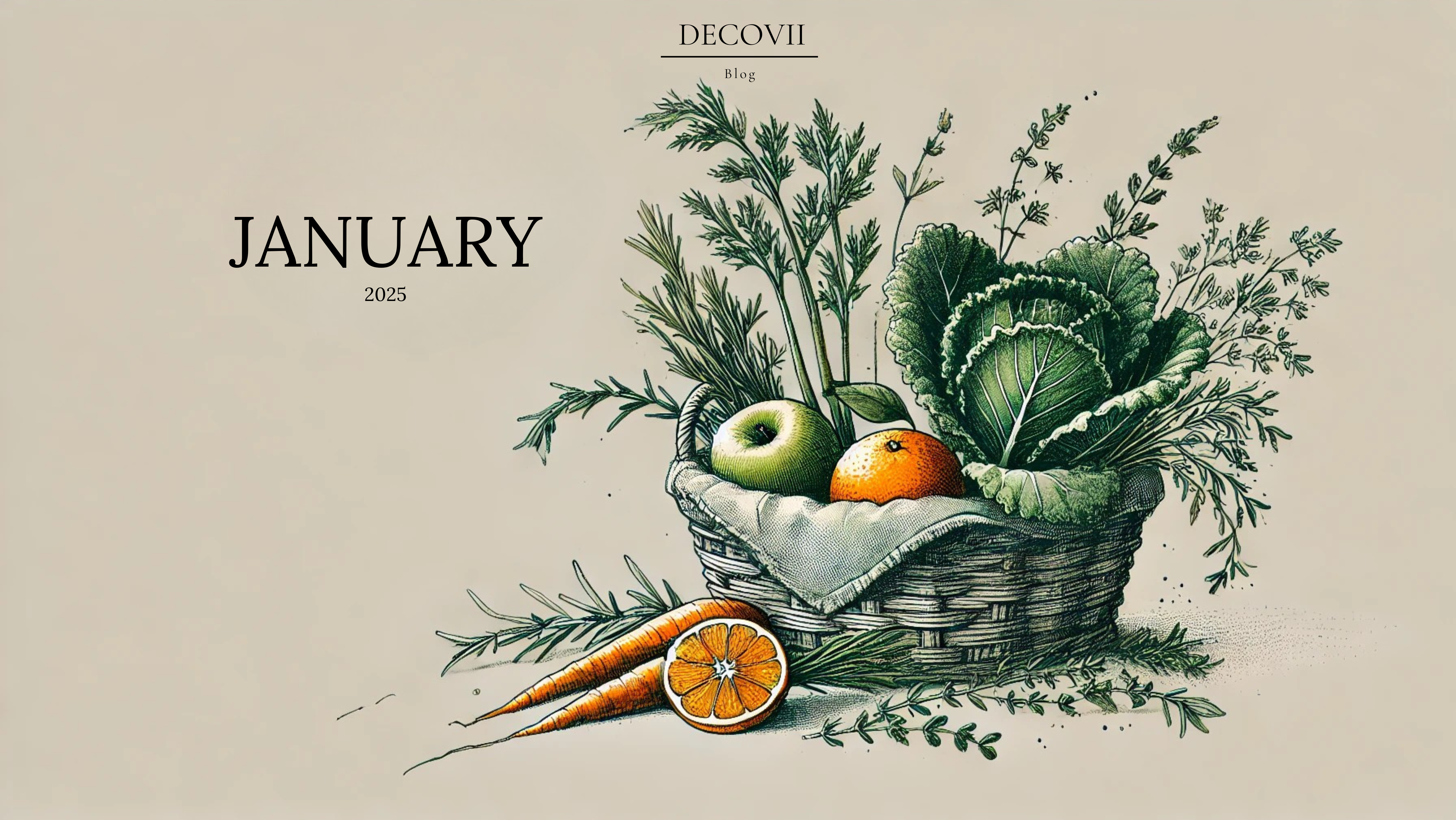January is a time for fresh beginnings and nourishing meals, and seasonal eating is a wonderful way to embrace winter’s bounty. While the colder months might seem sparse, they offer a variety of produce and herbs that bring depth, warmth, and flavor to your dishes. Eating seasonally not only supports local farmers and reduces environmental impact but also enhances the taste and nutritional value of your meals.
Here is a guide to January’s seasonal fruits, vegetables, and herbs, along with tips on how to use them in your kitchen.
1. Bright Citrus Fruits
Winter is citrus season, and fruits like oranges, grapefruits, lemons, limes, tangerines, and blood oranges are at their peak in January. Packed with vitamin C, these fruits add brightness to winter meals.
- How to Use: Add lemon juice to dressings, use orange slices in salads, or enjoy a blood orange tart. Lime zest can elevate marinades, and grapefruits are perfect for breakfast or juicing.
2. Hearty Root Vegetables
Root vegetables such as carrots, parsnips, turnips, radishes, and beets are staples in January. They are versatile, affordable, and perfect for hearty winter dishes.
- How to Use: Roast root vegetables with thyme, blend them into creamy soups, or shred raw beets and carrots for a refreshing slaw.
3. Versatile Winter Squash
Winter squash varieties like butternut squash, acorn squash, and spaghetti squash thrive in the cooler months. Their natural sweetness pairs beautifully with warming spices.
- How to Use: Make a butternut squash soup, stuff acorn squash with grains, or use spaghetti squash as a low-carb pasta substitute.
4. Nutritious Dark Leafy Greens
Cold-tolerant greens such as kale, Swiss chard, collard greens, and spinach flourish in winter, providing essential vitamins and minerals.
- How to Use: Sauté kale with garlic, use spinach in smoothies, or add Swiss chard to a winter stew. Collard greens work well in wraps or braised with aromatic herbs.
5. Cruciferous Vegetables
Brussels sprouts, cabbage, broccoli, and cauliflower thrive in January. These nutrient-rich vegetables are perfect for roasting, steaming, or adding to hearty meals.
- How to Use: Roast Brussels sprouts with balsamic glaze, use cabbage in stir-fries or soups, and make a creamy broccoli and cauliflower gratin.
6. Sweet and Juicy Fruits
January offers delightful fruits like pears and pomegranates. Pears are soft and sweet, while pomegranates provide a tart, refreshing flavor.
- How to Use: Poach pears in cinnamon-infused syrup, sprinkle pomegranate seeds over salads or roasted vegetables, or use pomegranate juice in dressings or cocktails.
7. Staples Like Potatoes and Onions
Potatoes, sweet potatoes, leeks, and onions are winter essentials that bring depth and heartiness to your cooking.
- How to Use: Make a creamy potato leek soup, bake sweet potatoes with cinnamon, or caramelize onions to top flatbreads and burgers.
8. Seasonal Herbs for Winter Cooking
Winter-friendly herbs add aromatic depth to January dishes. These include:
- Thyme: Excellent for roasted vegetables, soups, and stews.
- Rosemary: Perfect for potatoes, bread, and roasted meats or squash.
- Sage: Pairs wonderfully with brown butter, pasta, and stuffing.
- Parsley: Adds freshness to soups, salads, and grain dishes.
- Mint: Great for teas, desserts, or adding brightness to savory dishes.
Tips for Seasonal Winter Cooking
- Combine Produce and Herbs: Pair root vegetables with thyme or rosemary for enhanced flavors. Add sage to butternut squash ravioli or use parsley to finish hearty soups.
- Roast for Maximum Flavor: Many winter vegetables, like squash, root veggies, and Brussels sprouts, caramelize beautifully in the oven with a drizzle of olive oil and fresh herbs.
- Embrace Soups and Stews: Use leeks, potatoes, leafy greens, and herbs like thyme and rosemary to create warming, satisfying meals.
- Sweet and Savory Pairings: Combine fruits like pears and pomegranates with savory elements such as roasted squash, goat cheese, or nuts for elegant dishes.
- Preserve What You Can: Freeze extra herbs or blanch and store leafy greens to enjoy their flavors beyond the season.
January’s seasonal produce and herbs are perfect for nourishing meals that comfort and inspire. Whether you are roasting, stewing, or enjoying fresh flavors, this month’s ingredients offer countless possibilities. Visit your local farmers’ market or grocery store and let the season’s bounty guide your winter cooking.
